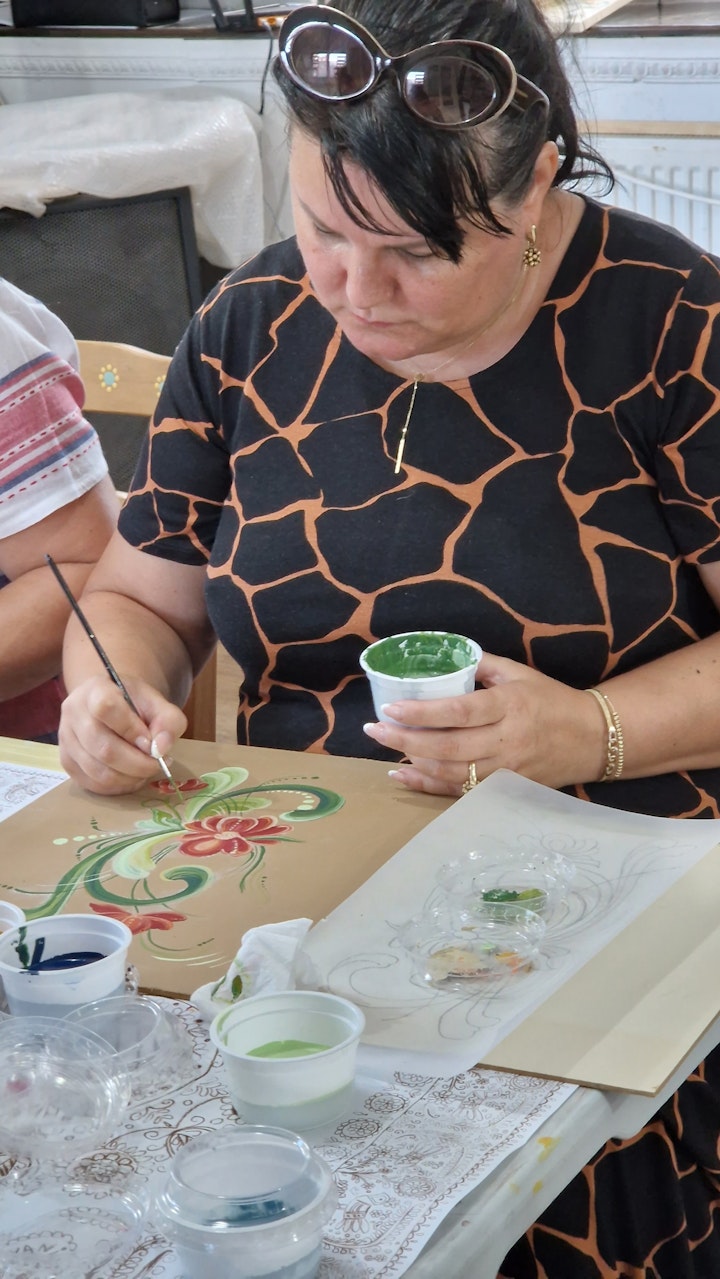Developing workshops on Saxon furniture painting: considering the technique

In this video tutorial, folk artist Carmen explains step by step the technique of painting traditional Saxon furniture.
Artist Victoria Ghilas gives more detail on the technique as follows:
Pattern-stencil application on a piece of furniture is not random. Choosing a particular pattern, from the many possible patterns we have in database, it is done in such a way that the ornament does not take up all the space. Some gaps or free spaces must be allowed. The framing is done perfectly in the centre, which is why we first draw a vertical axis in the middle. The pattern is symmetrically fixed. When applying the colours, the background colour is taken into account. You'd be amazed how different one and the same ornament looks if it is created on different background colours! The colours applied must have a complementary relationship with the background colour, taking into account complementary colour pairs (green-red, blue-orange, purple-yellow), and here I am referring to large surfaces, but also to combinations within the same brushstroke (by dipping the brush in two colours simultaneously). On dark backgrounds, the intense colours are harmoniously displayed, while on bright background, earth tones, whites and greys stand out. In Saxon painting, painting is done by applying the ink in one stroke.
Let's say we are painting a leaf; I will describe it step by step: dip the brush in green and then in ochre, apply the paint by holding the brush upright, rest your hand on the support so as to avoid any deviation, then press the brush tip first, slowly pull the whole brush line and press until you get a brushstroke like a little fish. The tulip is made by applying a central brush stroke, which must also have a beginning, an increase and a decrease, then two more symmetrical strokes, one on the left and one on the right. At the end, all shapes apart from the flowers are outlined with white or dark navy blue, almost black. The outline has several meanings: if we take into account that the Saxon painting originally tended to imitate carved surfaces, the flat painting that receives these lights and shadows appears in high relief.
Painting decorative elements are done in a certain order: flowers first, leaves second, never vice versa. Finally, the painting may receive a coating that gives it a weathered look, then a varnish in order to reveal the colours and give the object a finished look, as well as giving it protection against ageing.
Here you can follow the whole process, as participants experienced it: